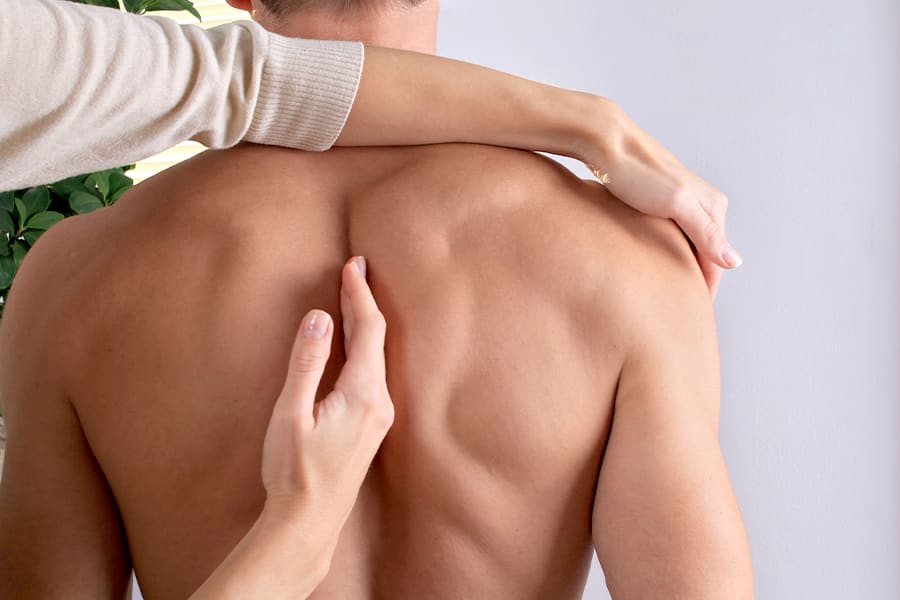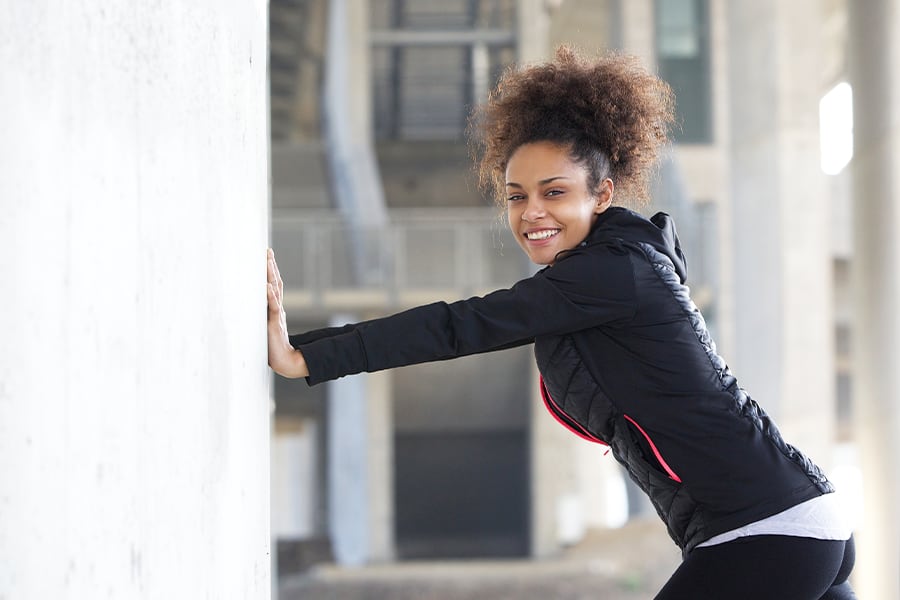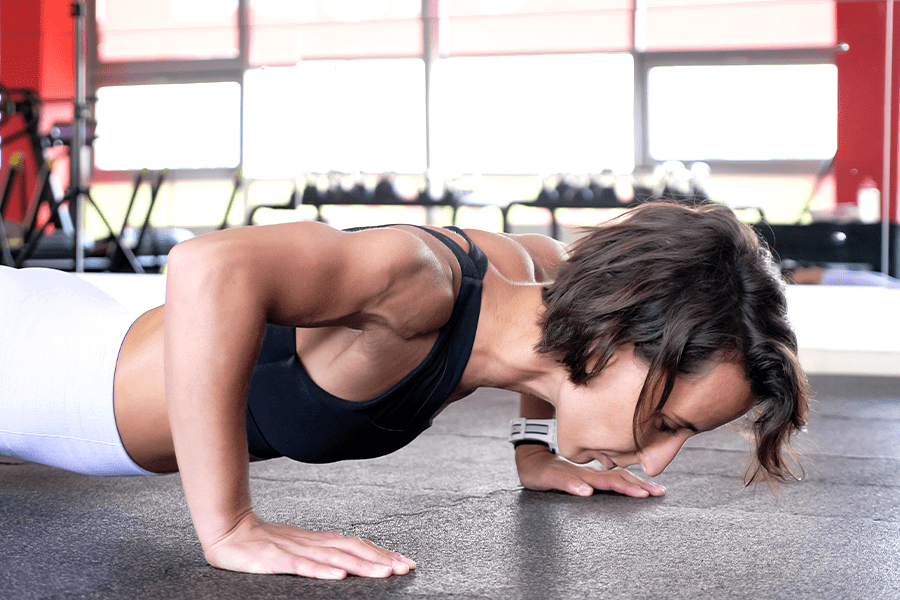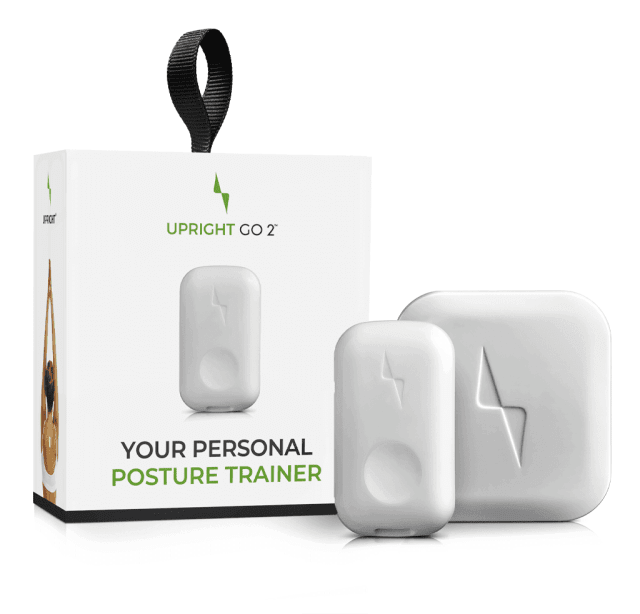Rounded Shoulders and How to Fix Them
Upright

Have you ever been sitting for a while and noticed that your shoulders were forward, like you were hunched over? Be honest, with all that time spent on smartphones we’ve all found ourselves curled around those tiny screens. When you were younger, your mom may have noticed you doing this during other activities and told you to stop slouching or to “stand up straight!” What your mom may not have told you, is that one of the main causes of more permanent slouching is those rounded shoulders. Rounded shoulders occur when your shoulders have moved forward out of your body’s ideal alignment. Being out of alignment can sound scary but don’t worry, we’re here to help you fix this habit.
How are rounded shoulders diagnosed?

Your family doctor or primary care physician can diagnose rounded shoulders. One simple but effective test a doctor or chiropractor may do is to observe the patient while they are standing. If the patient has rounded shoulders they may appear to be slouching, even when they are standing up as straight as possible. With rounded shoulders, the palm of the patient’s hand may also face behind them, with the thumbs pointing at each other. If the patient does not have round shoulders, the palms of their hands will face towards their body, with their thumbs pointing in front of them. The doctor may also perform additional tests according to the needs of the patient.
You can also do a brief self-assessment by looking at yourself in the mirror to see if your shoulders are bent forward and to see what position your hands naturally fall to. Focus on the way your chest sits between your shoulders. Does it cave in so your shoulders protrude forward? Or does your chest lift forward and upward so your shoulders naturally roll back? The first pose may be a sign of rounded shoulders, while the second represents a better posture.
UPRIGHT GO 2 can serve as an easy assessment and reminder of your rounded shoulders, as it will gently vibrate on your neck when your posture curves out of line.
What are the causes and risks of rounded shoulders?

Any activities that cause you to look forward and down regularly or for long periods of time can contribute to rounded shoulders. These types of activities include: typing at a computer, driving, sitting for long periods of time, using a smartphone or tablet, etc. And although these are activities that most of us must do, we can control how they affect us. Rounding our shoulders while doing these activities can have a negative impact on both our health and appearance, so a focus on posture is essential. Sadly, when having rounded shoulders means automatic poor posture. When we do these activities and round our shoulders, we accidentally train our body to slouch. Over time, the body may feel that this slouched position is its natural state. And not appearing to stand up straight isn’t the only consequence, rounded shoulders can lead to increased stress on the shoulder and neck muscles, which leads to neck and back pain. Because of this, it is recommended to try and improve one’s posture as soon as possible.
How do I avoid rounded shoulders?

Striving to sit up straight can help you to avoid rounded shoulders. To correctly sit up straight make sure your spine is against the back of your chair and your shoulders are rolled back, opening up your chest. Adjusting the height of your chair can help to make you can look ahead without having to look down.
Another way to avoid rounded shoulders is to make sure you are getting the right amount of vitamin D to build strong muscles. Think about it, if your muscles aren’t strong they can’t hold you, or your posture, upright all day long. It is recommended that adults get at least 600 IU a day of Vitamin D. Foods high in vitamin D include cheese, orange juice, egg yolks, and salmon. If you feel you aren’t getting enough vitamin D from your diet, you might consider taking supplements. If you aren’t sure if you are Vitamin D deficient, your doctor can do a blood test and help devise a plan for better intake. Regular exercise, especially posture-related exercise, can also strengthen your muscles for a stand-up posture.
All in all, if you believe you have rounded shoulders, you may want to make an appointment with your doctor to ensure there are not any additional health concerns.
How can I correct rounded shoulders?
You may be wondering how you can correct rounded shoulders and thus improve your posture. After all, we did say we were here to help. Luckily, although you may have accidentally trained your body into rounded shoulders, you can purposely train your body back to ideal posture. The easiest way to both correct rounded shoulders and to strengthen your back and shoulder muscles is through stretching and exercises. Just by spending 20 minutes a few times a week on the following exercises, you can make leaps and bounds in achieving good posture.
Stretches and exercises

Door chest stretches
Stretching your chest is a very integral part of improving posture. An easy way to stretch your chest is to use a door frame. To do this stretch, follow these steps:
- Stand in a door frame and place your hands just above your head on either side of the frame.
- While keeping your hands in this position, move one foot forward into a lunge.
- Hold the stretch for 30 seconds.
Handclasp
The handclasp stretch is one you may already be familiar with. To do this stretch, follow these steps:
- Stand up straight with your hands by your sides.
- Reach your hands behind you and clasp your hands together.
- Slowly and gently push your hands toward the ground pull your shoulders back until your chest opens and you feel the stretch. If you have a hard time feeling the stretch, try pointing your palms toward the floor while you push.
- Hold the stretch for 30 seconds.
Shoulder blade squeeze
This exercise helps to strengthen your back and shoulder muscles. To do this stretch, follow these steps:
- Sit up tall and move your shoulder blades back and together. As you are moving your shoulder blades together, it is important to make sure that your shoulders move down and not up towards your ears.
- Hold the stretch for 10 seconds, and repeat it 10-15 times.
The T stretch
This stretch is very simple. To do this stretch, follow these steps:
- Lie on your back with your feet on the floor with your knees bent, facing up.
- Extend your arms beside your body with your palms facing up toward the ceiling. You should feel a stretch in your shoulders and back.
- Hold the stretch for up to 10 minutes.
Wide pushup

Doing a wide pushup can help stretch and strengthen your back and shoulder muscles. To perform this exercise, follow these steps:
- Start in a standard pushup position with your hands on two yoga blocks placed a little wider than shoulder-width apart.
- Do a pushup, ensuring to keep your back straight and your pelvis in line with your back.
- Strive to do this exercise daily, with as many reps as you can safely handle.
Wall stretch
The wall stretch is very helpful in correcting rounded shoulders. To do this stretch, follow these steps:
- Stand with your back and head against a wall.
- Position your feet slightly away from the wall, and press your arms flat against the wall with your elbows at a 90-degree angle.
- Hold the stretch for 30-60 seconds.
Wall angels
To perform a wall angel stretch, follow these steps:
- Stand with your back against the wall, with your feet slightly forward.
- Place your arms against the wall in a “W” position.
- Extend your hands up towards the ceiling while keeping your shoulders flexed and down.
- Return your arms to the starting position to complete one repetition.
- Repeat this 10 times.
Preventing rounded shoulders
Although performing the above stretches can help mitigate rounded shoulders, the best prevention for rounded shoulders is to strive to have good posture at all times. Just as you may have trained your body to have poor posture through daily habits, being mindful of your positions going forward can help train your body to have good posture.
The all-new UPRIGHT GO 2 can serve as an easy reminder of poor positioning, as the discreet device on your back will gently vibrate when you start to slouch. Learn more about how the UPRIGHT GO can help you. Staying disciplined will not only help you improve your posture but maintain it. As you persist in your efforts to stop slouching, you will see the benefits of good posture unfold in your life.
You Might also Like
Search
Sign up to our newsletter
Follow Us On
Popular
Revisit the GO 2/S Device Setup
How to get started
Finding your upright position
How to find your target upright posture
Calibration
Check out the UPRIGHT GO 2

